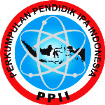Misconceptions of Prospective Biology Teachers on Fructus Material Using the Certainty of Response Index Technique
Abstract
This study is aimed to identify misconceptions about fructus that occur in biology teacher candidates. To achieve this goal, this study used a descriptive research method with a survey method to describe a condition of misconceptions of prospective biology teacher students based on the CRI technique. This research was carried out at the fkip of lancang kuning university in the 2020/2021 academic year. The population in the study were biology education students who contracted the plant morphology course with the research sample selected by saturated sampling or total sampling, amounting to 35 people. The data collection technique is by giving a fructus concept ability test in the form of multiple choice equipped with a cri scale with a total of 15 question numbers. Data analysis techniques were used using the cri (certainty of response index) technique and the levels of conception and constructive misconceptions were presented descriptively. The findings of the study were obtained from 525 conceptions that there were three categories of conceptions that occurred among prospective biology teacher students about fructus, namely understanding the concept of fructus 27.75% and not understanding the concept of fructus 37.35% and misconceptions 34.90%. Biology teacher candidate students were found to have misconceptions with moderate levels of misconceptions. The concept of misconception occurs in students about fructus, namely the concept of true fruit groups and pseudo fruit groups in fruits. It is hoped that the findings of misconceptions in prospective teachers can become the basis for parties to develop appropriate models or media to reduce the level of misconceptions.
Keywords: misconceptions, fructus, CRI
Full Text:
PDFReferences
Alter, B.J & Nelson, C.E. (2002). Perspective: Teaching Evolution in Higher Education. Evolution International of Organic Evolution, 56 (10), 1891-1901.
Ardiyanti, Y., & Utami, M.R. (2017). Identifikasi Miskonsepsi Siswa pada Materi Sistem Reproduksi. BIOSFER, J.Bio. & Pend. Bio, 2 (2), 18-23
Dikmenli, M. (2010). Misconceptions of Cell Division Held by Student Teachers in Biology: A Drawing Analysis. Scientific Research and Essay, 5(2), 235-247.
Dikmenli, M., Cardak, O., & Oztas, F. (2009). Conceptual Problems in Biology-Related Topics in Primary Science and Technology Textbooks in Turkey. International Journal of Environmental and Science Education, 4(4), 429-440.
Handoko, R & Sipahutar, H. (2016). Analisis Buku Teks Biologi SMA Kelas X Berbasis Kurikulum Tingkat Satuan Pendidikan 2006 dan Kurikulum 2013 di Kota Tebing Tinggi. Jurnal Pelita Pendidikan, 4 (1), 39-47.
Hasan, S., Bagayoko, D., & Kelley, E. L. (1999). Misconceptions and the Certainty of Response Index (CRI). Physics Education, 34(5), 294-299..
Nehm, R. H., & Reilly, L. (2007). Biology Majors' Knowledge and Misconceptions of Natural Selection. BioScience, 57(3), 263-272.
Kara, Y., & Yesilyurt. (2008). Comparing the Impact Tutorial and Edutainment Software Program on Student Achievment, Misconception, and Attitudes toward Biology. Journal Science Education and technology. 17, 32-41.
Kose, E. O., Pekel, O., & Hasenekoglu, I. (2009). Misconceptions and Alternative Concepts in Biology Textbooks: Photosynthesis and Respiration. Online Submission, 10(2), 91-93.
Morton, J.P., Doran, D.A., & MacLaren, D.P (2008). Common Student Misconceptions in Exercise Physiology and Biochemistry. Advanced Physiology Education, 32.
Nurfiyani, Y., Putra, M. J. A., & Hermita, N. (2020). Analisis Miskonsepsi Siswa SD Kelas V Pada Konsep Sifat-sifat Cahaya. Journal of Natural Science and Integration, 3(1), 77-86.
Presiden Republik Indonesia. (2005). Peraturan Pemerintah Republik Indonesia Nomor 19 Tahun 2005 tentang Standar Nasional Pendidikan.
Ramadhani, R., & Asiah, M. D. (2016). Identifikasi Miskonsepsi Siswa Pada Konsep Sistem Reproduksi Manusia Kelas XI IPA SMA Unggul Ali Hasjmy Kabupaten Aceh Besar. Jurnal Ilmiah Mahasiswa Pendidikan Biologi, 1(1).
Rustaman, N.Y (2019) The Role of STEM-DSLM in Facilitating Student’ Conceptual Change and Preventing Misconception in Life Science. Juornal of Physics: Conference Series.1521 042038
Slameto. (2010). Belajar dan Faktor-faktor yang Mempengaruhinya. Jakarta: Rineka Cipta
Suparno. (2013). Miskonsepsi & Perubahan Konsep Pendidikan biologi. Grasindo: Jakarta
Tayubi, Y. R. (2005). Identifikasi Miskonsepsi pada Konsep-Konsep Fisika Menggunakan Certainty of Response Index (CRI). Mimbar Pendidikan, 3(24), 4-9.
Yulia, T. (2017). Analisis Miskonsepsi Siswa Mengunakan Mata Pelajaran Sains di SMPN 4 Penukal Utara Kabupaten Penukal Abab Lematang Ilir Pendopo. Bioilmi: Jurnal Pendidikan Biologi, 3 (2), 1-7.
Wenning, C. J. (2005). Implementing Inquiry-based Instruction in the Science Classroom: A new Model for Solving the Improvement-of-practice Problem. Journal of Physics Teacher Education Online, 2(4), 9-15.
DOI: http://dx.doi.org/10.24014/jnsi.v6i1.16600
Refbacks
- There are currently no refbacks.

Journal of Natural Science and Integration
E-ISSN: 2620-5092 P-ISSN: 2620-4967
Published By:
Department of Science Education, Faculty of Education and Teacher Training,
State Islamic University of Sultan Syarif Kasim Riau, Indonesia
Mailing Address:
Jl. H.R Soebrantas Km. 15 No. 155
Kelurahan Simpang Baru
Kecamatan Tuah Madani, Pekanbaru, Riau, Indonesia
Email: jnsi.tadrisipa@uin-suska.ac.id
Indexed By:
Journal of Natural Science and Integration is licensed under a Creative Commons Attribution 4.0 International License.


_-_Copyy2.png)






.jpg)
.png)
.jpg)
.jpg)




